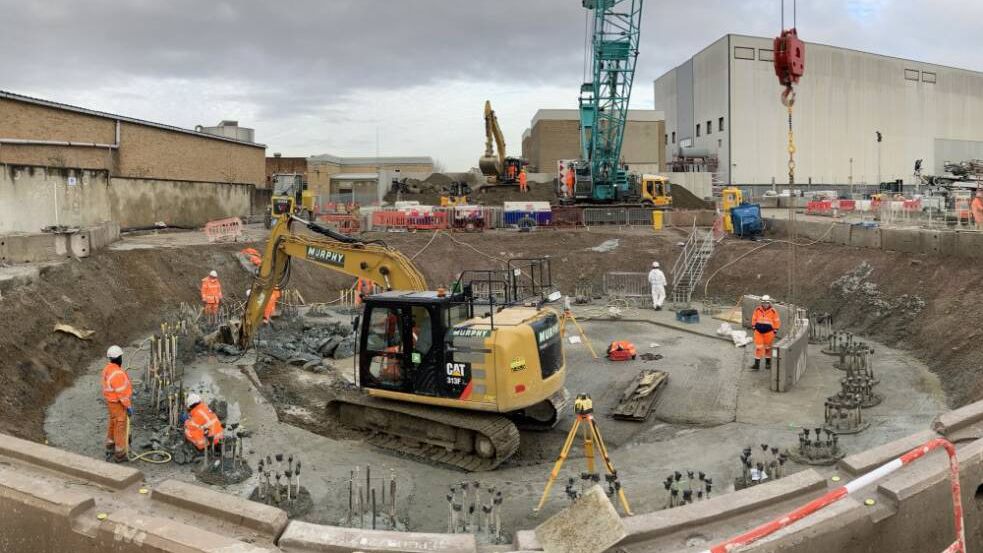2020
London, United Kingdom
Following a successful first phase in 2018, London Power Tunnels 2 (LPT2) is a project to ‘rewire’ south London. The six-year, £1bn scheme will comprise the construction of 32.5km of 3m-diameter tunnels built deep below the road network between Wimbledon and Crayford to carry high voltage electricity cables.
A Hochtief-Murphy Joint Venture (HMJV) was awarded the contract in December 2019 to design and construct the tunnels & shafts and install the EHV (extra-high volume) cable brackets. The New Cross site is one of several in the overall scheme.
Project Requirements
With consideration of the bustling city above ground and London’s geology in terms of river terrace deposits, Thanet sand formation and upper chalk, the project posed complexities in which the material specification had to overcome.
Situated in southeast London, the site was historically a gas works and is bounded by industrial facilities. Therefore, a programme of enabling works was required to remove below-ground obstructions at the proposed shaft locations to an approximate depth of five metres.
The New Cross site comprised two shafts and a short link tunnel in order to launch two TBMs (Tunnel Boring Machines), one in each direction. The project utilised a specialist method of grouting to the New Cross shaft – fissure grouting using MPSP (multi-packer sleeved pipe) which was undertaken by Spie Batignolles Fondations UK (SBF UK).
Sika Solutions
Spinor® A20, a microcement based on ultra-fine blast furnace slag, was specified as it has been designed especially for various injection fields such as consolidation and sealing, regeneration, waterproofing and rehabilitation where it can be applied to underground works.
Offering excellent durability and injectability, Spinor® A20 has a high level of precision in controlling grain size distribution and provides D100 = 20 μm, meaning 100 per cent of the material is finer than 20 micron. Most alternative products only guarantee that 95% of the material meets the specified fineness.
The use of Spinor® A20 reduced the carbon footprint of the project as it is 80 per cent GGBFS (Ground Granulated Blast-Furnace Slag). This means it reduced the scheme’s CO2 emissions considerably; SBF UK estimate that its use saved over 90% (42 tonnes) of the embodied carbon dioxide (CO2e) in the grouting process, when compared to a completely cement-based product.
Specification of the Spinor® A20 enabled progression of the shaft build, minimising the passage of water during excavation.
A total of 54 tonnes of Spinor® A20 was used for the project which was completed in December 2020.
Sources
https://londonpowertunnels.co.uk/project-summary/
Project Participants
A Hochtief-Murphy Joint Venture (HMJV)
Spie Batignolles Fondations UK (SBF UK).

